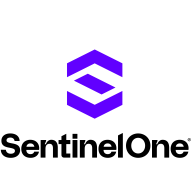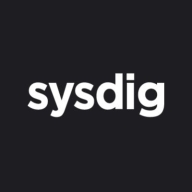


Sysdig Monitor and Microsoft Defender for Cloud compete in the realm of cloud infrastructure monitoring and security. Microsoft Defender for Cloud holds an advantage due to its comprehensive security capabilities, which many users consider worth the investment despite its higher price.
Features: Sysdig Monitor excels with detailed container monitoring, Kubernetes integration, and alerting features. In contrast, Microsoft Defender for Cloud provides a suite of security tools such as threat intelligence, security posture management, and advanced data protection.
Ease of Deployment and Customer Service: Microsoft Defender for Cloud offers seamless deployment within the Azure ecosystem with extensive documentation and support. On the other hand, Sysdig Monitor requires more initial configuration but comes with specialized customer support for its intricate setup.
Pricing and ROI: Sysdig Monitor's flexible pricing model is appealing for those focusing on container environments seeking lower initial costs. Microsoft Defender for Cloud's higher upfront investment is justified by comprehensive security tools, potentially offering better long-term ROI for organizations focused on security prioritization.
| Product | Market Share (%) |
|---|---|
| Microsoft Defender for Cloud | 14.8% |
| Wiz | 15.9% |
| AWS GuardDuty | 13.2% |
| Other | 56.099999999999994% |
| Product | Market Share (%) |
|---|---|
| Sysdig Monitor | 1.3% |
| Dynatrace | 33.1% |
| Datadog | 25.8% |
| Other | 39.8% |



| Company Size | Count |
|---|---|
| Small Business | 46 |
| Midsize Enterprise | 20 |
| Large Enterprise | 53 |
| Company Size | Count |
|---|---|
| Small Business | 26 |
| Midsize Enterprise | 7 |
| Large Enterprise | 45 |
SentinelOne Singularity Cloud Security offers a streamlined approach to cloud security with intuitive operation and strong integration capabilities for heightened threat detection and remediation efficiency.
Singularity Cloud Security stands out for its real-time detection and response, effectively minimizing detection and remediation timelines. Its automated remediation integrates smoothly with third-party tools enhancing operational efficiency. The comprehensive console ensures visibility and support for forensic investigations. Seamless platform integration and robust support for innovation are notable advantages. Areas for development include improved search functionality, affordability, better firewall capabilities for remote users, stable agents, comprehensive reporting, and efficient third-party integrations. Clarity in the interface, responsive support, and real-time alerting need enhancement, with a call for more automation and customization. Better scalability and cost-effective integration without compromising capabilities are desired.
What are SentinelOne Singularity Cloud Security's standout features?SentinelOne Singularity Cloud Security is deployed in industries needing robust cloud security posture management, endpoint protection, and threat hunting. Utilized frequently across AWS and Azure, it assists in monitoring, threat detection, and maintaining compliance in diverse environments while providing real-time alerts and recommendations for proactive threat management.
Microsoft Defender for Cloud is a comprehensive security solution that provides advanced threat protection for cloud workloads. It offers real-time visibility into the security posture of cloud environments, enabling organizations to quickly identify and respond to potential threats. With its advanced machine learning capabilities, Microsoft Defender for Cloud can detect and block sophisticated attacks, including zero-day exploits and fileless malware.
The solution also provides automated remediation capabilities, allowing security teams to quickly and easily respond to security incidents. With Microsoft Defender for Cloud, organizations can ensure the security and compliance of their cloud workloads, while reducing the burden on their security teams.
Sysdig Monitor allows you to maximize the performance and availability of your cloud infrastructure, services, and applications. Built on open source, it provides immediate, deep visibility into rapidly changing container environments. You can resolve issues faster by using granular data derived from actual system calls enriched with cloud and Kubernetes context along with Prometheus metrics. Remove silos by unifying data across teams for hybrid and multi-cloud monitoring.
We monitor all Cloud Workload Protection Platforms (CWPP) reviews to prevent fraudulent reviews and keep review quality high. We do not post reviews by company employees or direct competitors. We validate each review for authenticity via cross-reference with LinkedIn, and personal follow-up with the reviewer when necessary.